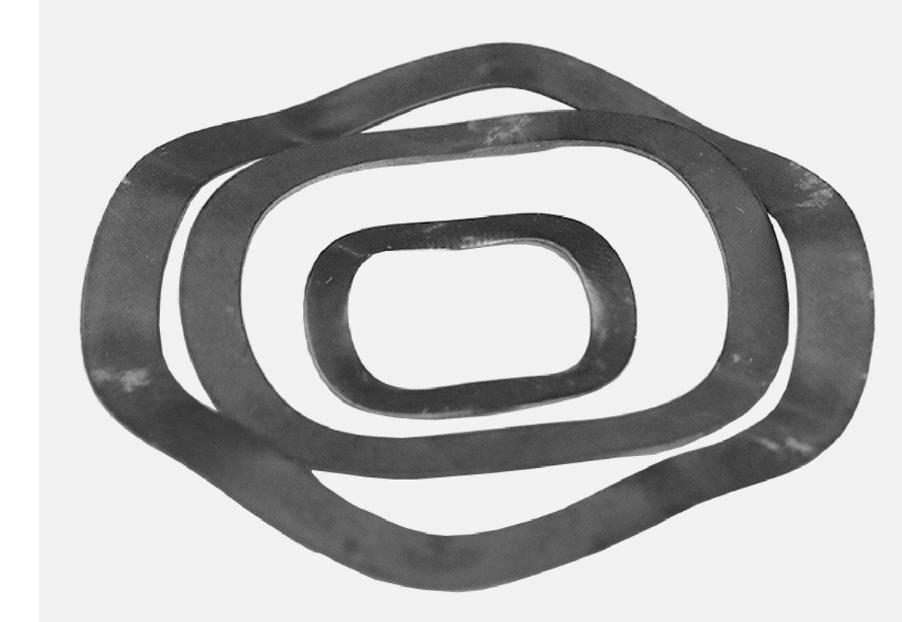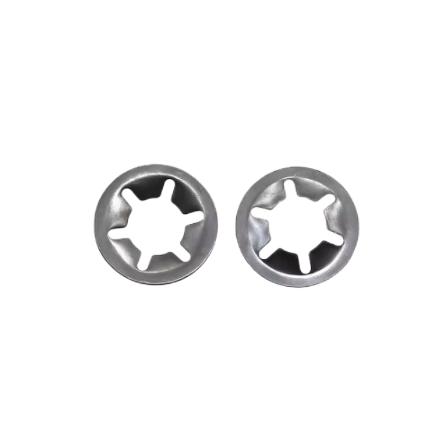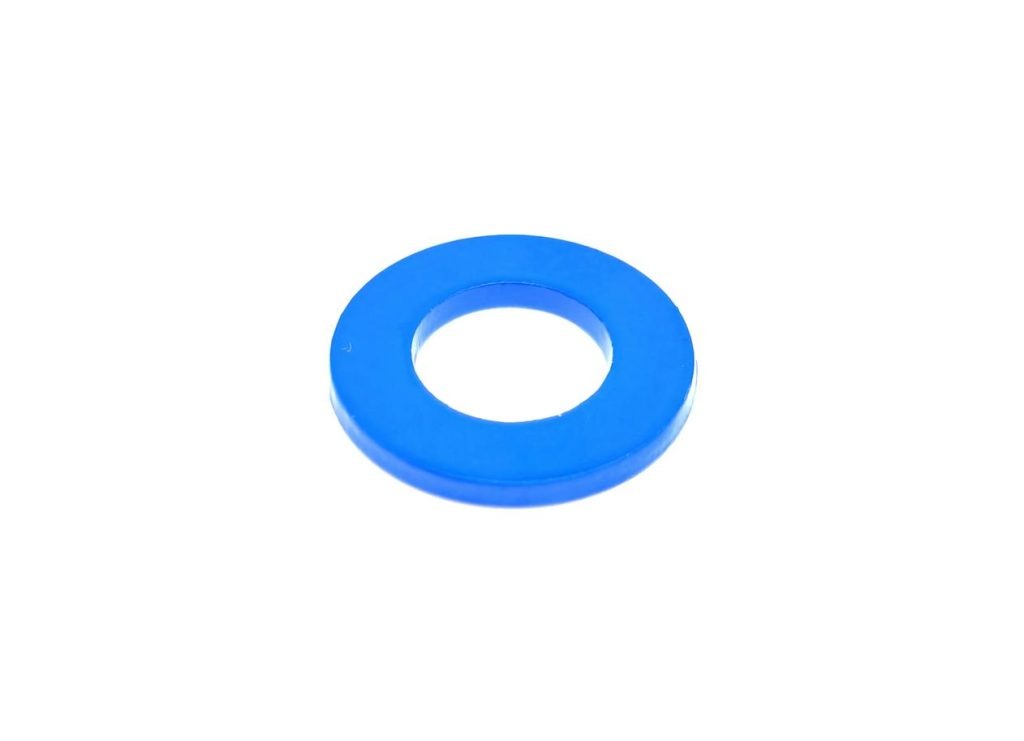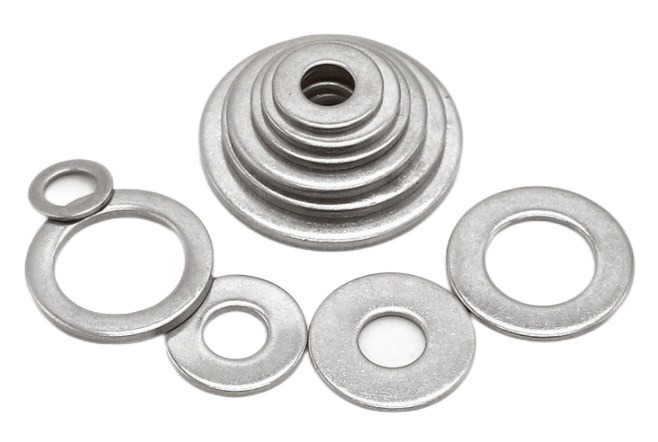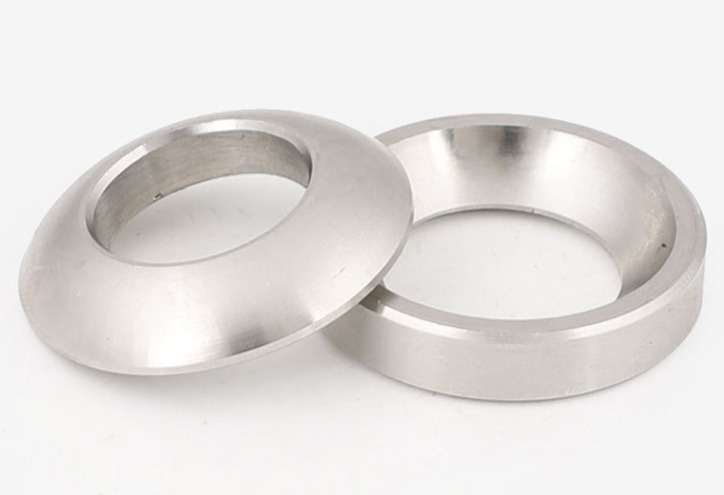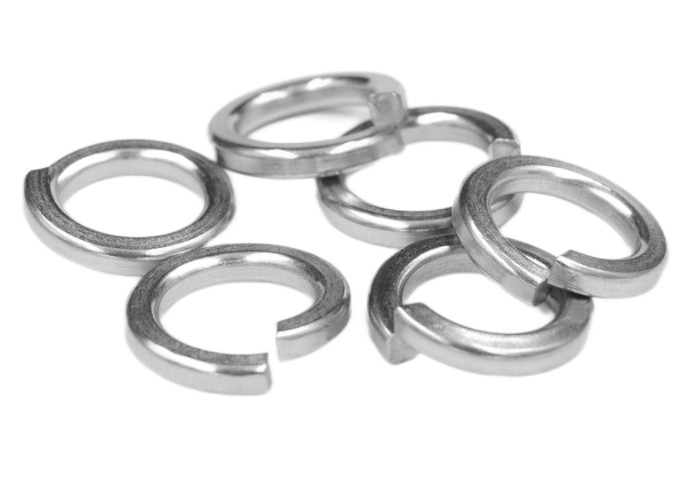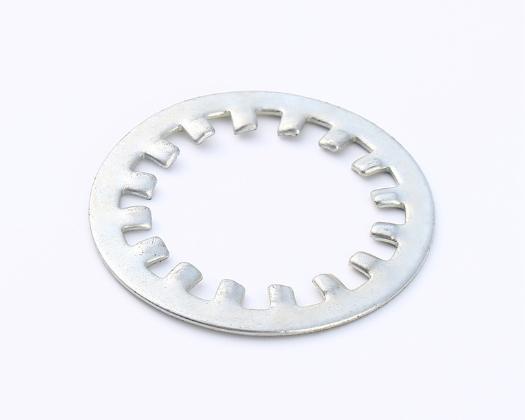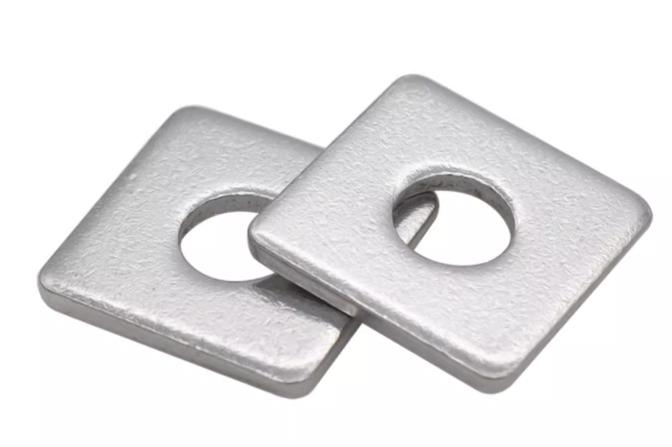A Guide to Selecting and Using Spherical Washers
Spherical washers are a specific type of washer designed to address misalignment or non-parallelism between connecting surfaces in mechanical assemblies. They achieve this by featuring a concave spherical cap on one side and a flat surface on the other. The spherical cap allows for a limited angular or rotational adjustment, ensuring that even when the connected components are not perfectly aligned, they can still make proper contact and distribute the load evenly.
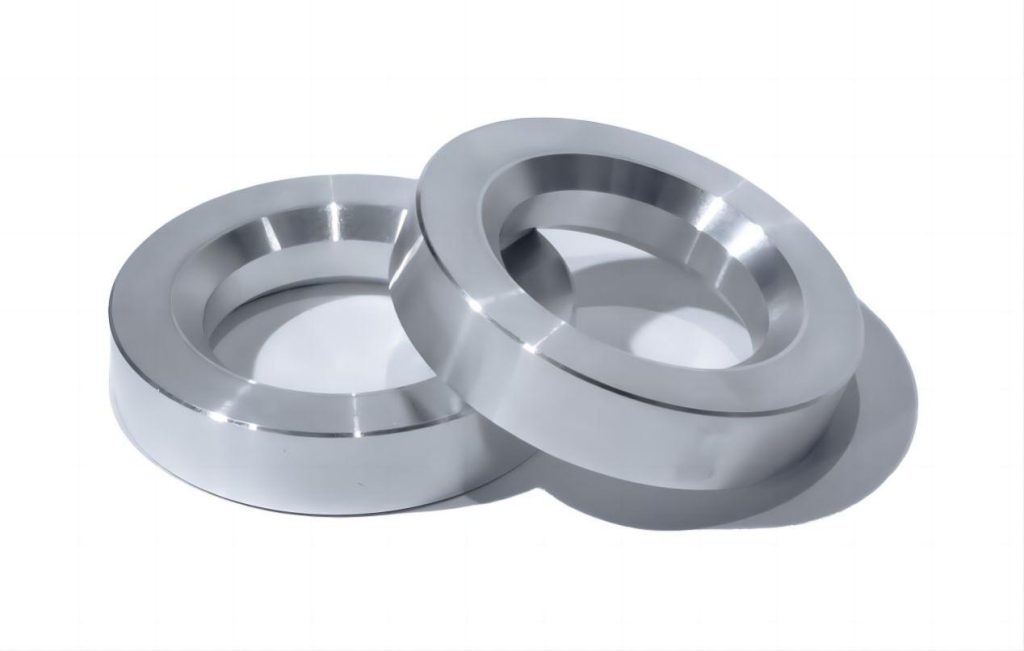
What are the Types of Spherical Washers?
There are two main types of spherical washers:
1. DIN 6319 Spherical Washers
This is the most commonly encountered type, characterized by a two-piece design consisting of:
- Male Washer (Form C): This component has a distinct convex spherical cap on one side and a flat surface on the opposite side.
- Female Washer (Form D): This component features a concave spherical seat that precisely matches the curvature of the male washer’s cap, allowing for a snug fit and smooth articulation.
These washers are typically employed in pairs. The male washer, with its convex cap, is placed on top of the female washer’s concave seat. This configuration allows for a wider range of angular or rotational adjustment compared to single-piece washers, making them suitable for applications requiring significant misalignment correction.
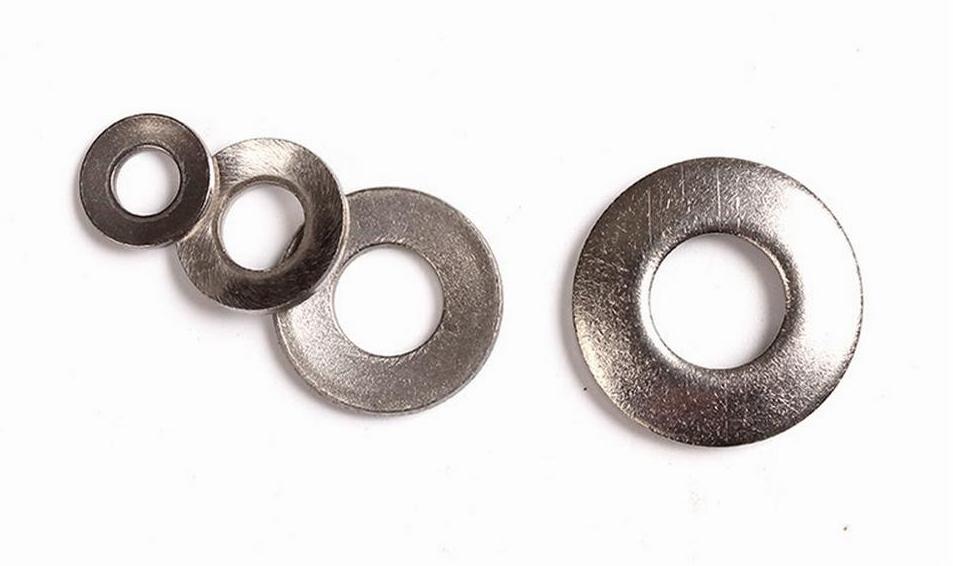
2. Dished Washers
This type stands in contrast to DIN 6319 spherical washers by having a single-piece design, and dished washers are a single unit, featuring a concave spherical cap on one side and a dished or flanged edge on the other side. The dished or flanged edge may have various shapes and sizes depending on the specific application.
Dished washers are often the preferred choice in situations where:
- Limited Space: The compact single-piece design makes them ideal for applications with restricted space constraints where a two-piece washer might not be feasible.
- Minor Misalignment: When only minor adjustments for misalignment are necessary, dished washers offer a simpler and more efficient solution compared to the two-piece DIN 6319 spherical washers.
It’s important to note that while dished washers offer certain advantages like space efficiency and ease of use, their single-piece design generally limits the range of angular or rotational adjustments compared to the two-piece DIN 6319 spherical washers. Therefore, the choice between the two types should be based on the specific requirements of the application, considering factors like available space and the degree of misalignment correction needed.
What are Spherical Washer Applications?
Spherical washers find application in various industrial and mechanical settings due to their ability to address misalignment and unevenness. Here’s a breakdown of their use cases across different industries:
1. Machine Assembly
Leveling components: During machine assembly, components like motors, pumps, and gearboxes might not sit perfectly flat on their mounting surfaces due to slight manufacturing variations or uneven installation. Spherical washers placed between these components and their bases help compensate for these inconsistencies. By allowing for a slight angular or rotational adjustment, they ensure proper contact and prevent uneven load distribution that could lead to premature wear or damage.
Aligning components: When connecting shafts, gears, or other components requiring precise alignment, even minor angular deviations can cause operational issues. Spherical washers placed between the connecting elements can accommodate these slight misalignments, ensuring proper engagement and smooth operation. This is particularly crucial in applications involving high-speed rotation or significant torque transmission.
2. Construction
Compensating for uneven surfaces: In construction projects, mounting surfaces for various components, such as beams, brackets, or machinery, might not be perfectly level due to uneven ground or slight imperfections in construction materials. Spherical washers placed between these components and their mounting points help bridge these small gaps and ensure proper load distribution. This prevents uneven stress concentration that could lead to structural weaknesses or premature component failure.
3. Automotive Industry
Adjusting for misalignment in suspension components: Suspension systems in vehicles are subjected to constant stress and movement. Over time, components like control arms, bushings, and tie rods can experience slight wear or deformation, leading to misalignment. Spherical washers incorporated into these components allow for controlled angular adjustments, enabling technicians to restore proper alignment during maintenance or repairs. This ensures optimal handling, tire wear, and overall vehicle safety.
Steering systems: Similar to suspension components, steering systems also require precise alignment for safe and controlled vehicle operation. Spherical washers placed within specific steering linkages can accommodate minor misalignments that might arise due to wear or component play. This helps maintain proper steering response and prevents unpredictable vehicle behavior.
4. Aerospace Engineering
Ensuring proper load distribution in critical components: Aircraft components are designed to withstand immense stresses and vibrations during flight. Spherical washers are strategically placed within critical components like landing gear assemblies, wing attachment points, and engine mounts. By accommodating slight misalignments and ensuring even load distribution, they help prevent stress concentration and potential failures that could compromise the aircraft’s structural integrity and safety.
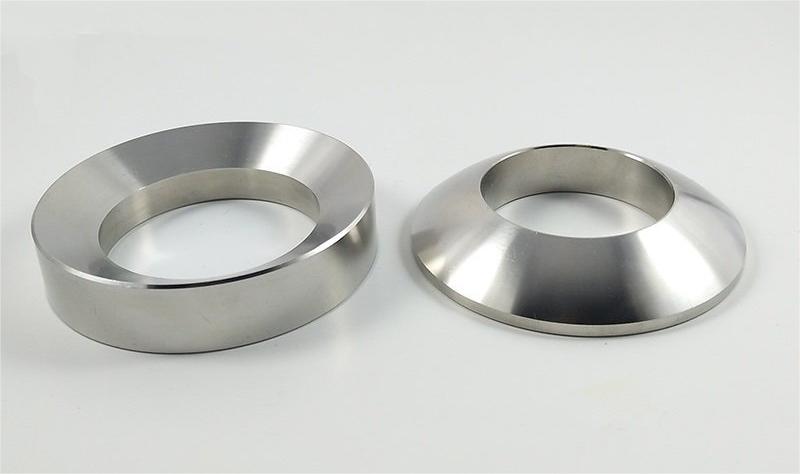
Where to Buy Spherical Washers?
Spherical washers can be acquired through various channels, catering to diverse needs and preferences:
1. Online Retailers
Numerous online retailers offer a wide selection of spherical washers, allowing for convenient purchases from the comfort of your own location. Popular options include:
- Industrial supply stores: These stores typically stock a comprehensive range of industrial fasteners and components, including various types and sizes of spherical washers.
- Manufacturer websites: Many manufacturers of spherical washers also maintain online stores or platforms where you can directly purchase their products.
- General online retailers: Certain general online retail platforms might also offer spherical washers, although the selection might be more limited compared to specialized industrial suppliers.
2. Physical Stores
For those who prefer a hands-on approach or require immediate access to spherical washers, several physical stores can fulfill their needs:
- Industrial supply stores: Similar to online retailers, physical industrial supply stores often carry a diverse inventory of spherical washers, enabling you to browse and choose the specific type and size required for your project.
- Hardware stores: While the selection might be more limited compared to dedicated industrial suppliers, some hardware stores might stock commonly used sizes and types of spherical washers.
What are the Factors to Impact the Price?
The cost of spherical washers can vary depending on several key factors:
- Size: Larger spherical washers generally cost more than smaller ones due to the increased material and manufacturing requirements.
- Material: Stainless steel washers typically come at a higher price point compared to steel washers due to the additional properties and corrosion resistance offered by stainless steel.
- Quantity: Buying spherical washers in bulk often comes with a discounted price per unit, making it a cost-effective option for larger projects requiring a significant number of washers.
- Brand: Different manufacturers might have varying pricing strategies based on brand recognition, material sourcing, and production costs. It’s recommended to compare prices from several retailers before making a purchase.
By considering these factors and exploring the available purchasing options, users can make informed decisions when acquiring spherical washers that meet their specific project requirements and budget constraints.
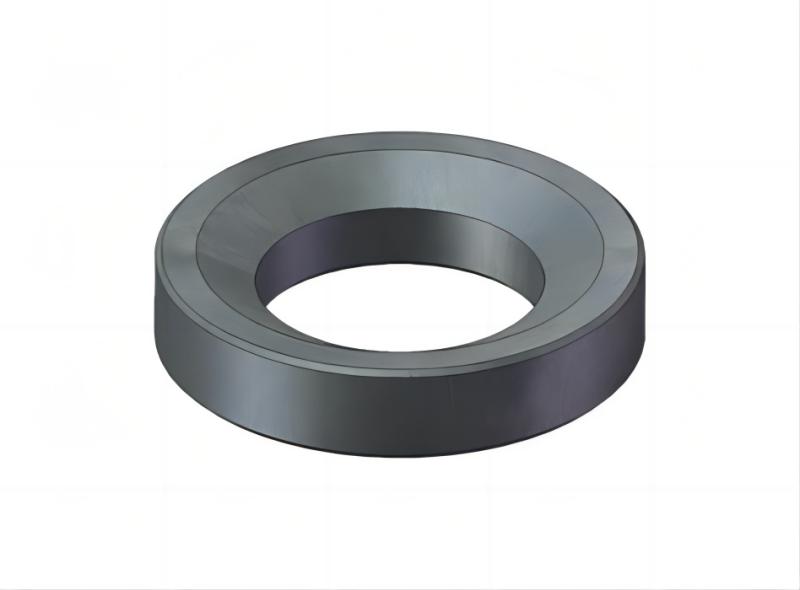
What are the Specifications of Spherical Washers?
Selecting the appropriate spherical washer for a specific application requires careful consideration of its technical specifications. Here’s a breakdown of the key factors to evaluate:
1. Standard Sizes and Dimensions
Spherical washers adhere to specific industry standards to ensure consistent sizing and compatibility with other components. The most common standard for spherical washers is DIN 6319, established by the Deutsches Institut für Normung (German Institute for Standardization). This standard defines various dimensions and designations for both single-piece and two-piece spherical washers.
Here are some crucial dimensions to consider when selecting a spherical washer:
- Thread Size (d): This refers to the nominal diameter of the threaded hole in the washer, which needs to match the corresponding thread size of the bolt or nut used in the assembly. It is typically denoted by the letter “d” followed by a number, such as M8, M10, or M12, indicating the millimeter diameter of the thread.
- Inner Diameter (ID): This is the internal diameter of the washer’s hole, measured at the flat base. Knowing the ID ensures the washer fits correctly around the threaded component.
- Outer Diameter (OD): This refers to the overall diameter of the washer, which should be compatible with the space available in the assembly.
- Thickness (H): This is the overall height of the washer, measured from the flat base to the highest point of the spherical cap.
- Cap Radius (r): This dimension specifies the radius of curvature of the spherical cap, which is relevant for ensuring proper articulation and load distribution.
It’s important to note that specific dimensions for each size and type of spherical washer can be found by referring to the relevant DIN 6319 standard or the manufacturer’s specifications.
2. Material Options
Spherical washers are commonly manufactured from two primary materials, each offering distinct advantages and suitable for various applications:
- Steel: This is a cost-effective option for general-purpose applications where corrosion resistance is not a major concern. Steel washers offer good strength and durability for moderate loads.
- Stainless Steel: This material provides superior corrosion resistance compared to steel, making it ideal for applications in harsh environments, exposed to moisture, or involving food and beverage processing. Stainless steel washers also offer enhanced strength and can withstand higher loads.
Choosing the appropriate material depends on factors like the application’s environment, expected load, and desired level of corrosion resistance. Consulting the manufacturer’s specifications or an engineering professional can help determine the optimal material selection for your specific needs.
What to Take into Consideration When Installing a Spherical Wahser?
Once you’ve acquired spherical washers that meet your project requirements, understanding proper installation and compatibility with other components is crucial for ensuring their intended function and optimal performance.
1. Installation Guidance:
Installing spherical washers is a relatively straightforward process. Here’s a general guide:
- Prepare the Surface: Ensure the mounting surfaces for the components being connected are clean, flat, and free of debris. Any unevenness or foreign objects could hinder proper alignment and washer performance.
- Position the Washers: For DIN 6319 washers, place the male washer (convex cap) on top of the female washer (concave seat). For single-piece dished washers, simply position the washer with the spherical cap facing the intended direction of adjustment.
- Insert the Assembly: Carefully insert the washer(s) into the designated location within the assembly, ensuring proper alignment with the components they are connecting.
- Secure the Connection: Thread the nut or bolt onto the appropriate threaded component, ensuring it passes through the washer(s) and engages with the threads on the opposite side.
- Tighten the Connection: Gradually tighten the nut or bolt using an appropriate wrench, following the recommended torque specifications for the specific bolt or stud material and size. Avoid overtightening, as this can damage the threads or components.
2. Compatibility Considerations:
For spherical washers to function effectively, they need to be compatible with the other components in the assembly. Here are key aspects to ensure compatibility:
- Thread Size: The washer’s thread size (d) must match precisely with the thread size of the bolt or nut used in the assembly. Mismatched thread sizes will prevent proper assembly and compromise the connection’s integrity.
- Inner Diameter (ID): The washer’s inner diameter (ID) needs to be slightly larger than the diameter of the threaded component it surrounds. This slight clearance allows for proper positioning and articulation of the washer.
- Space Constraints: The outer diameter (OD) and thickness (H) of the washer should be compatible with the available space within the assembly. Installing washers that are too large might not fit within the designated location, hindering proper assembly and potentially causing interference with other components.
- Material Compatibility: The chosen washer material should be compatible with the materials of the surrounding components, especially in situations involving dissimilar metals. This helps prevent issues like galvanic corrosion, which can occur when certain metals come into direct contact in specific environments.
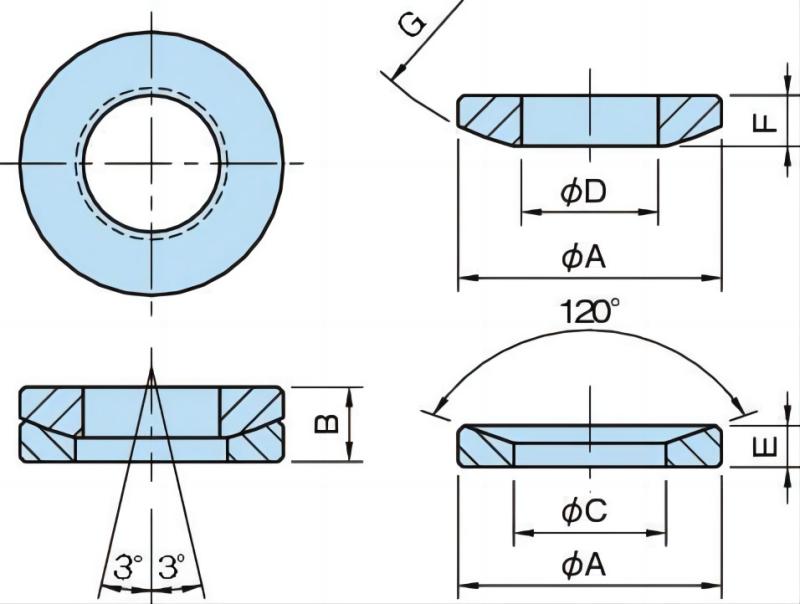
Conclusion
Spherical washers are valuable components that play a critical role in ensuring proper alignment and load distribution in various mechanical applications. By understanding the different types, applications, and key specifications of spherical washers, users can make informed decisions when selecting and using these components in their projects.
For additional information and resources, users are encouraged to consult the websites of reputable fastener manufacturers and engineering forums. These resources can provide further technical details, application-specific recommendations, and insights from experienced professionals.

